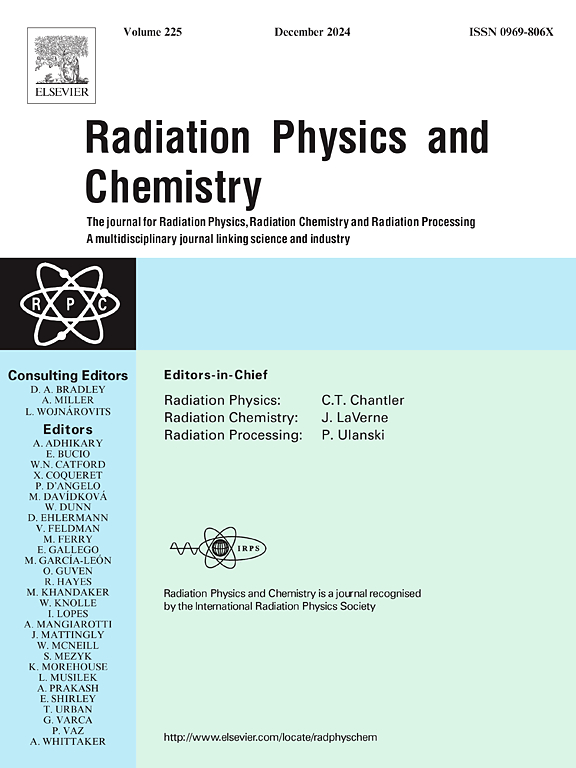S values for a monkey computational model in diagnostic nuclear medicine procedures
IF 2.8
3区 物理与天体物理
Q3 CHEMISTRY, PHYSICAL
引用次数: 0
Abstract
In the field of nuclear medicine, monkeys have been instrumental in advancing our understanding of how radioactive materials behave within a living organism. However, dosimetric data, including S values, for various source and target regions in monkey's anatomy and radionuclides remain limited. The current study is aimed to develop a library of S values by utilizing a computational monkey model in conjunction with Monte Carlo radiation transport methods. We developed a S value library through the following process. First, we computed specific absorbed fractions (SAFs) for 35 source organs and 35 target organs using the general-purpose Monte Carlo radiation transport code, MCNP6. Monte Carlo simulations were performed for both photons and electrons, covering 27 monoenergetic bins ranging from 0.001 to 10 MeV. Next, we derived the S values from the SAFs for photons and electrons by incorporating energy spectrum data for 299 radionuclides most commonly used in diagnostic nuclear medicine, as provided by ICRP Publication 107. The differences in self-irradiation S values for the large organs likely stem from the type of particles: positron/beta vs. gamma. Cross-irradiation S values mirror the trends seen in SAFs, particularly in relation to the inter-organ distances between source and target regions. The comparison of S values between the monkey models and ICRP reference human models suggests that the monkey model-based S values are unique and may not be surrogated by human model-based S values. This S value library is expected to be a valuable resource for estimating organ doses in monkeys when paired with radionuclide distribution data across their anatomy.求助全文
约1分钟内获得全文
求助全文
来源期刊

Radiation Physics and Chemistry
化学-核科学技术
CiteScore
5.60
自引率
17.20%
发文量
574
审稿时长
12 weeks
期刊介绍:
Radiation Physics and Chemistry is a multidisciplinary journal that provides a medium for publication of substantial and original papers, reviews, and short communications which focus on research and developments involving ionizing radiation in radiation physics, radiation chemistry and radiation processing.
The journal aims to publish papers with significance to an international audience, containing substantial novelty and scientific impact. The Editors reserve the rights to reject, with or without external review, papers that do not meet these criteria. This could include papers that are very similar to previous publications, only with changed target substrates, employed materials, analyzed sites and experimental methods, report results without presenting new insights and/or hypothesis testing, or do not focus on the radiation effects.
 求助内容:
求助内容: 应助结果提醒方式:
应助结果提醒方式:


